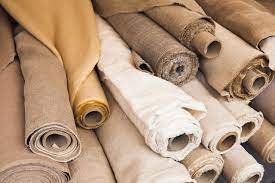Potential Niche Market For Vietnamese Textiles In Northern Europe
Northern Europe includes countries such as Sweden, Denmark, Norway and Finland where consumers always prioritize environmentally friendly and socially responsible products. Sustainable textile products, derived from organic or recycled materials, produced in accordance with environmental protection standards and workers' rights are increasingly dominating the Nordic market.
Many Advantages Of Natural Materials, Traditional Techniques
Ms. Nguyen Thi Hoang Thuy, Vietnamese Trade Counsellor in Sweden, concurrently serving in the Nordic countries, said that participating in the sustainable fashion market not only requires the production of high-quality products, but also must be in line with the new sustainability standards that the EU, including the Nordic countries, which are increasingly tightening.
This is emphasized by the EU's new Sustainable and Circular Textiles Strategy announced in March 2022. This EU strategy aims to minimize the impact of the textile industry on the environment, improve resource efficiency and encourage product recycling.
The main objectives of the strategy: Reducing waste and environmental pollution from the textile and garment industry, including microplastic waste and hazardous chemicals; increase the use of sustainable materials such as recycled or organic materials, and encourage the production of products that are durable and easy to reuse; promoting a circular economy through production, consumption, recycling and reuse models; develop strict standards for textile and garment products sold on the EU market, including requirements for durability, recyclability and environmentally friendly production processes.
According to Ms. Thuy, as one of the major textile and garment exporting countries in the world, Vietnam is facing the opportunity to exploit this niche market. The EU's promotion of the Sustainable Textile Strategy opens up many opportunities for Vietnamese textile and garment enterprises, especially in the context of the growing trend of sustainable fashion consumption in Northern Europe.
"We have many advantages to exploit this market, such as abundant natural raw materials. Vietnam has a rich source of organic raw materials such as organic cotton, bamboo, bamboo, and natural silk, which are popular with Nordic consumers. These are biodegradable materials, do not contain harmful chemicals, in line with the environmental protection requirements that the EU is promoting," Ms. Thuy pointed out.
Besides, there are traditional craftsmanship, meeting the needs of sustainability as well as cultural factors. Vietnam's silk weaving, hand-embroidery, and traditional costume production can create sustainable and unique fashion products. These products are not only environmentally friendly, but also have cultural value, attracting Nordic consumers looking for differences.


However, this strategy also sets increasingly high sustainability requirements for fashion products imported into the EU, especially from major manufacturing countries such as Vietnam.
Compliance with the EU's strict standards for sustainability is a major challenge for Vietnamese businesses. These standards require businesses not only to use environmentally friendly raw materials but also to ensure that the production process is non-polluting and the product is highly recyclable. On the other hand, meeting EU standards requires businesses to invest in cleaner production technology and more efficient waste management. At the same time, obtaining international certifications such as the Global Organic Textile Standard (GOTS) or Fair Trade also creates an initial cost burden.
Quickly Adjust The Production Model
According to Ms. Thuy, in order to penetrate the Nordic sustainable textile market and benefit from the EU's sustainable textile strategy, Vietnamese businesses need to adapt to regulatory and strategic changes to ensure their products meet new standards for durability, recycling and environmental friendliness set out by the EU.
Vietnamese businesses need to focus on meeting strict environmental standards. Businesses can cooperate with international organizations to achieve sustainability certifications, thereby creating a competitive advantage in the market.
"In order to meet the EU's requirements for recyclability and circularity, businesses should invest in technologies to produce recycled materials or develop highly reusable products. Optimizing the production process to reduce waste is also an important factor," Ms. Thuy recommended.
In addition, enhancing value through creative design. Vietnamese businesses need to focus on improving product value through creative design, in line with sustainable fashion trends. Ms. Thuy said: "Products not only need to meet environmental requirements, but also have modern aesthetics and style, meeting the needs of Nordic consumers"
At the same time, using traditional Vietnamese materials such as silk, combined with modern design and advanced techniques to create high-end and sustainable fashion products. E-commerce is also an important channel for Vietnamese businesses to access the Nordic market. Therefore, according to the Vietnamese Trade Counsellor in Sweden, taking advantage of online retail platforms such as Zalando, ASOS and platforms specializing in sustainable fashion is an effective strategy to introduce products to Nordic consumers.
Nordic consumers are particularly interested in the origin and story of the product. Therefore, Vietnamese businesses should build a brand based on the story of an environmentally friendly production process, combined with traditional Vietnamese culture and crafts. This helps to create engagement with customers and enhance brand recognition.
“To be successful, businesses need to quickly adjust their production models to meet strict environmental and social standards, and make the most of traditional cultural values and creativity in design. The combination of sustainability and culture will help Vietnamese businesses affirm their position in the international market and dominate the potential Nordic market”
Looking for producing garment in Vietnam?









